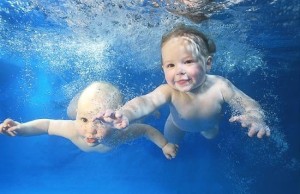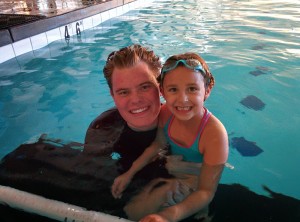
When you’re on the hunt for the best place to take Gilbert swim lessons, one of the main things to look for is a school that has skilled and professional swim instructors. Being a good instructor is part art, part science. You need the certifications and proper training, as well as strong people and management skills. At EVO Swim School, we have strict guidelines that instructors must meet to be part of our team. Here are some of the qualities we look for that you also can use during your swim instructor search.
1. Certifications or Training
There are several nationally recognized certifications instructors can get. However, many of these certifications are watered down and don’t achieve the desired results we require at EVO. We see these certifications as a bonus if instructors already have them, but they are not required. In fact, many of our best instructors came to us without any formal certifications.
When researching Gilbert swim lessons, look for instructors who either have certifications OR go through hands-on training as part of their employment with the school. For example, all EVO instructors receive in-house training from a Site Manager. Before they’re approved to begin teaching, each person must pass a written test and teach with the owner to ensure they can meet our high performance standards.
2. Defined Lesson Plans
Good lessons start with a good plan that keeps instructors organized and ensures students learn all the important skills they need. At EVO, we have a special approach to aquatic instruction with an emphasis on six goals: being safe, having fun, staying fit, and eventually swimming for competition. This approach and our ability to get results quickly represent our mantra, “where learning to swim has evolved.”
All of our instructors are required to follow our approved curriculum and steady, consistent style to make sure each student has the best experience possible, no matter which class they take. When you’re researching swim schools, ask about their lesson plans and teaching style to understand exactly what each student will learn and how they will learn it over the course of each session.
3. Plenty of Repetition
In addition to having defined lesson plans, it’s just as important to work with instructors who give students enough turns to practice during their lessons. For example, if your son or daughter is swimming with three other students and is getting fewer than 10-12 turns, your child isn’t getting enough practice time, and you are not getting your money’s worth. Depending on the class level, EVO strives to provide children with 18-30 turns during a 30-minute class. Use this as a benchmark during your instructor search.
4. Small Class Sizes
Getting personal attention is vital to any swim lesson, so seek out schools with low instructor-to-child ratios. For example, all of EVO’s five lesson levels maintain a ratio of no more than four swimmers to one instructor (4:1). Our parent-tot classes and Advanced Stroke classes have a maximum ratio of 6:1 and 16:1, respectively. Maintaining small class sizes allows instructors to properly supervise and coach every student, while making the class easier to manage.
5. Strong Coaching Persona
Much like getting a driver’s license, receiving swim instructor certifications is only the first step in becoming a good coach. Instructors at EVO must have patience, be able to explain instructions clearly, listen and be in tune with their students, give corrections firmly yet nicely, and balance fun with professionalism. We recommend looking for similar qualities in any instructor you work with.
For more information on how to pick the right swim instructor for you, call EVO at 480-539-2660.
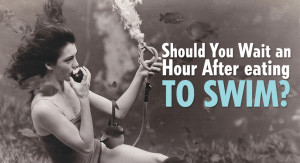 At EVO’s Queen Creek swim school, we often overhear the same words of warning from protective parents and caretakers: “You just ate! Wait a few minutes before you get in the pool.” But is their sage advice accurate after all? Let’s see if they’re sharing facts or fiction.
At EVO’s Queen Creek swim school, we often overhear the same words of warning from protective parents and caretakers: “You just ate! Wait a few minutes before you get in the pool.” But is their sage advice accurate after all? Let’s see if they’re sharing facts or fiction.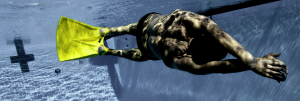
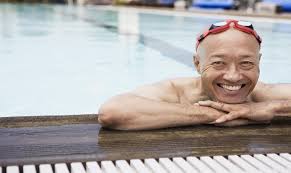 At EVO’s Mesa swimming school, our goal is to offer the very best aquatic instruction for infants, children, pre-competitive swimmers, and adults. Part of that instruction includes helping people be knowledgeable and confident swimmers, so over the next few months, EVO’s owner, David Tait, will be answering some of the common questions he receives from parents and students at our school.
At EVO’s Mesa swimming school, our goal is to offer the very best aquatic instruction for infants, children, pre-competitive swimmers, and adults. Part of that instruction includes helping people be knowledgeable and confident swimmers, so over the next few months, EVO’s owner, David Tait, will be answering some of the common questions he receives from parents and students at our school.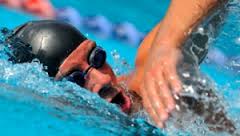
 Chlorine has been used to sterilize water for over 100 years and has been a go-to pool cleaner since the 1960s, when the United States Public Health Service published its first model ordinance for public pool construction, sterilization, and use. Since then, it has become a staple for most swimming facilities and even saltwater pools, which use a chlorine salt generator to sanitize the water.
Chlorine has been used to sterilize water for over 100 years and has been a go-to pool cleaner since the 1960s, when the United States Public Health Service published its first model ordinance for public pool construction, sterilization, and use. Since then, it has become a staple for most swimming facilities and even saltwater pools, which use a chlorine salt generator to sanitize the water. 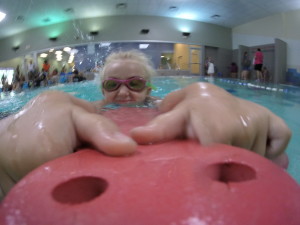
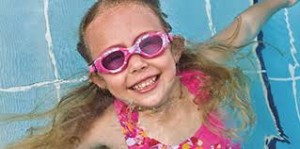 Signing up your child for swim lessons unleashes a wave of excitement, questions, and maybe even a few concerns. When should I start teaching them how to swim? How many lessons do they need? Should I buy any equipment?
Signing up your child for swim lessons unleashes a wave of excitement, questions, and maybe even a few concerns. When should I start teaching them how to swim? How many lessons do they need? Should I buy any equipment? 
